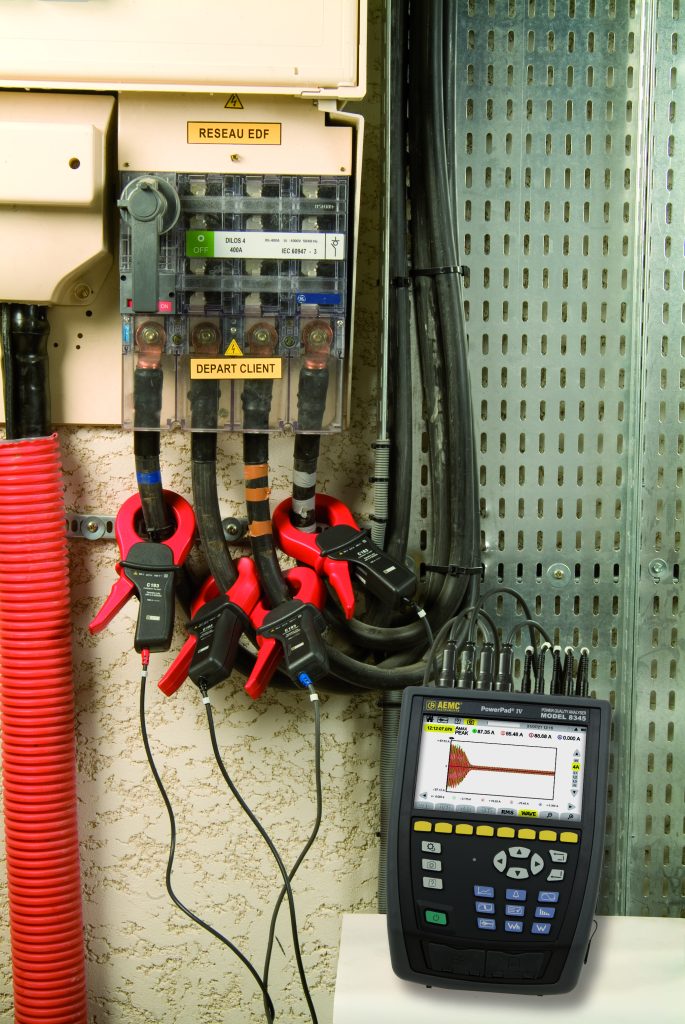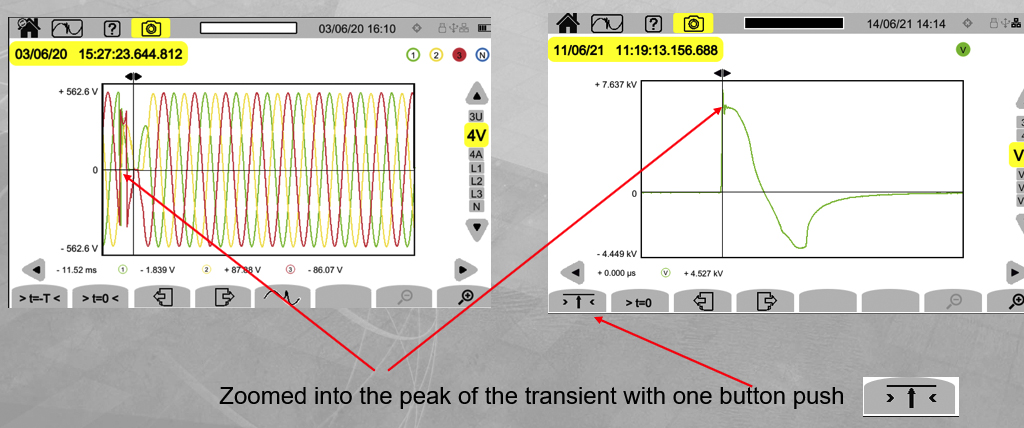TODAY THERE ARE MANY CHOICES AVAILABLE when selecting an instrument for power quality analysis. The features and functions vary tremendously across offerings by the manufacturers of these products.
Let’s first look at the international standard IEC 61000-4-30. It describes the measurement requirements, and the way power quality analyzers should make measurements. The standard defines the specific measurement procedures and methods for measuring power quality parameters such as Line Voltage, Voltage Fluctuations, referred to as Flicker, Voltage Unbalance as well as Harmonics associated with Voltage and Current.
One of the first, and most important choices, you need to make is the accuracy required for your ongoing applications for power quality monitoring. To do this you will need to review and understand the IEC 61000-4-30 Standards’ classification on time accuracy. There are three classes of accuracy to consider. These are Class A, Class S and an older standard, Class B. A brief review of each of these accuracy conditions spelled out in the standard is presented here.

Class A identifies the measurement time accuracy to be better than +/- 0.3 sec/day for voltage, current, harmonics and other measurements. With specific procedures and understanding for uncertainties. This time accuracy requires that the instrument incorporates a Global Positioning System (GPS) which is a network of satellites and receiving devices used to determine the location of something on Earth.
Power Analyzers that meet Class A performance requirements of the IEC 61000-4-30 standard, will repeatedly achieve the same measurement responses when connected to the same signals. Class A devices are required to meet the highest performance and accuracy requirements in the standard.
Class S also defines the measurement time accuracy to be better than +/- 0.3 sec/day for parameters such as voltage, current and harmonics. It has less stringent defined measurement methods and tolerances for Line Voltage, Flicker and Harmonic measurement methods and uncertainties in accordance with IEC 61000-4-7 Class I. The accuracy and performance requirements for Class S are not as rigorous as Class A.
The Class B performance class was included in the second edition of IEC 61000-4-30. It facilitated making many older power analyzers still viable at the time the standard was issued and allows their measurements to still be useful. Class B compliant power analyzers offer accuracies that are typically used for power surveys, trouble shooting and other applications where a high level of accuracy is not needed. The inaccuracies associated with Class B Power Quality Analyzers for the typical measurements of voltage, ficker, current, harmonics and frequency are defined and listed by individual manufacturers.
The latest edition of IEC 61000-4-30 Edition 3 published in 2015 no longer lists Class B in the standard as a performance class.
If you are looking to purchase a power quality analyzer today, you should strongly consider either a Class A or Class S device depending on your accuracy needs. There are also cost considerations you need to review in the process. If you think of power quality analyzers as good (Class B), better (Class S) and best (Class A), the costs increase accordingly with pricing ranging from the $3000 to $12,000 range.
Once you have made the decision on the accuracy class you need to comply with the application, you should look at the most frequently required parameters to be measured and does the instrument you are selecting have the ability to measure these parameters.
The parameters defined in IEC 61000-4-30 Edition 3 include:
- Frequency
- Magnitude of supply voltage
- Flicker
- Voltage surges and Sags
- Voltage Interruptions/Transients
- Unbalance
- Harmonics
- Interharmonics – defined as frequencies that are not multiple of the fundamental
- Line Carrier Signaling
- Deviation from nominal values, both above and below
- Rapid voltage changes (a.k.a Shockwaves)
Let’s take a look at a few of the new parameters outlined in the standard.
These features are available to make it a lot easier to analyze these conditions along with the more common monitoring of surges and sags and transients. Below is listed a transient capture with the ability to zoom in to the actual offending transient at the push of a button.

Shockwave – Usually caused by lightning or inductive loads turning on and off. Shockwaves are huge instantaneous electrical voltage surges. They also propagate in the digital network.
Class A Power Analyzers can typically withstand some shockwaves up to 12 kV which are sampled every 500 ns. The standard only requires up to 6kV.
The waveform above represents a typical shockwave capture.
Line Carrier Signaling or Main Signaling Voltage (MSV) is a function that tracks non-harmonic bursts of remote-control signals that ride on the fundamental frequency. They are typically used in remote control of industrial equipment and on automation applications and eliminates the need for running additional wiring.
IEC 61000-4-30 defines measurement of the frequencies for line carrier monitoring that are typically below 3kHz.The plot below depicts a line signal capture in the 1600 Hertz range. The green area represents the carrier signal and the red line represents the acceptable parameter tolerances. Deviations above the red line indicate areas of potential concern.

In review, the requirements and standards for power quality analysis have advanced significantly particularly in the area of accuracy and repeatability of measurement. New features such as rapid voltage change monitoring and line carrier signal monitoring have added additional ability to analyze power quality issues along with the traditional voltage, current, harmonic, surge, sag and transient monitoring.
These capabilities come at varying costs in instrumentation.
You would be wise to understand the standards and the requirements needed for the various applications you have for power quality analysis in order to choose the right instrument for the task.





